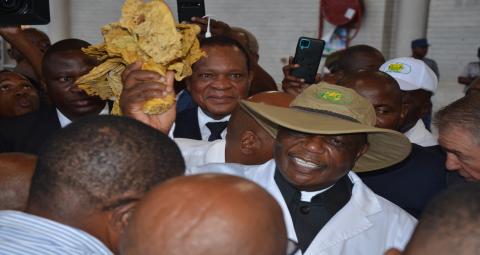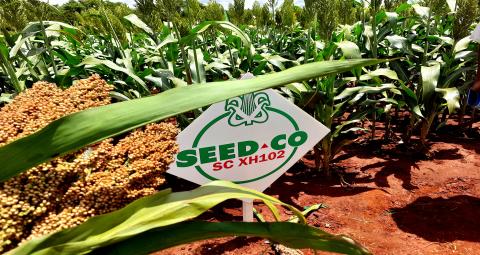
- Introduction
The Zimbabwe Farmers Union made oral submissions to the RBZ during its 2025 pre-monetary policy consultations. Our submission highlighted the following.
- Financial inclusion is still very low because of the cumbersome Know Your Customer (KYC) requirements for MSME under which smallholder farmers can be categorised. Bank charges are too high. Instead of farmers gaining interest on their deposits they lose value to bank charges resulting in negative balances over time. There are no incentives to participate in formal banking for low-income earners.
- Proposal to review upwards the foreign currency retention threshold from 70% for export proceeds to cushion farmers from the high parallel market premium, i.e., farmers are paid the local currency equivalent at the RBZ official rate yet prices of agricultural inputs, spares, etc, are priced at the higher parallel market rate. This translates to loss of value on their proceeds.
- High interest rates on loans from banks and Micro Finance Institutions. Adding the interest rates (~15%) to arrangement fees (~3%) and insurance results in an effective 18 to 20% on USD loans.
- Banks disbursing loans in small instalments results in delays in financing the investments, impacting negatively on productivity, viability and debt servicing. Banks blame this on liquidity challenges alleging that the Central Bank is failing to meet their requirements.
- That the ZiG currency is scarce, whether electronic or in notes and coins, making it less preferable to the USD for the transacting public.
- Highlights of the 2025 Monetary Policy Statement
- Reduction of foreign currency retention threshold from 75% to 70%
- Introduction of a USD Denominated Deposit Facility
- Removal of 5% margin cap on interbank foreign exchange trading
- Removal of limits on foreign exchange trading
- Upward review of prepaid international debit and credit card limits from USD$500k to USD$1m
- Sustainable accumulation of gold and foreign currency reserves
- Bank policy rate maintained at 35%
- Upward review of minimum deposit interest rates (Zig- Savings deposits 5%, time deposits 7.5%; USD savings deposits 2.5%, time deposits 4%)
- Targeted Finance Facility extended to wholesalers and retailers
- Statutory Reserves to be maintained at 30% demand, 15% fixed term deposits
- Adoption of point-of-sale (POS) systems by all businesses, for transactions conducted in both ZiG and USD. This is to be a pre-condition for business licensing
- Promotion of interbank market trading.
- Use of ZWG as a reporting currency by all entities with immediate effect
- RBZ embarking on educational campaign programs to promote ZWG
- Analysis of Selected Highlights
- Reduction of foreign currency retention threshold from 75% to 70%
This means that exporters, e.g., tobacco farmers, are going to surrender 30% of their foreign currency earnings, which will be paid in ZiG at the prevailing official RBZ exchange rate. This is a review up from 25%.
The Governor completely disregarded our plea and instead went on to do the opposite. We had hoped that this would be reduced to around 10 to 20%, or in the long shot, scrapped altogether.
Whilst this measure creates more liquidity for the government, it hurts exporters the most since they require foreign currency for importing spare parts and other capital needs. Currently the exchange rate premium between the official and parallel market is plus or minus 35%. Exchanging their foreign currency at a discounted rate will erode exporters’ bottom line.
- Introduction of a USD Denominated Deposit Facility
Exporters can retain their surrender portion in this facility. This only achieves protection from loss of value in terms of the official exchange rate volatility, which in any case has been relatively stable. Money in this facility should yield interest and not lose value due to unsustainable bank charges. This facility however will not cushion depositors from the parity between the official and parallel market.
- Upward review of prepaid international debit and credit card limits from USD$500k to USD$1m
This is in favour of entities that have large cross border transactions e.g., for imports, offshore transactions and investments. The average Zimbabwean farmer will not benefit much from this measure.
- Upward review of minimum deposit interest rates
- Zig Savings 5%, time deposits 7.5%.
- USD deposits 2.5%, time deposits 4%
High interest rates on deposits simulates financial inclusion and promotes a savings culture. Generally, this level will benefit large more than small deposits. More savings will result in increased loanable funds and hence improved access to finance.
- Targeted Finance Facility extended to wholesalers and retailers
This maybe a response to the current wave of closures of some major wholesalers and retailers. However, the challenges that these entities are facing need a much closer investigation. To farmers these closures translate into loss of existing and potential markets for their produce.
- Use of ZWG as a reporting currency by all entities with immediate effect
Whist compelling all businesses to report in ZiG makes financial statements comparable and the consolidation of statements easier, it comes with critical downsides. In a multi-currency regime, where the ZiG contribute only 20% in transactions, several accounting complexities are bound to arise, including inflation translations and investor concerns. The Zig is not as stable as the USD and it would have been natural to report in the stable currency which contributes more than 80% of all transactions in the country. Trend analysis is also better and more comprehensible with a stable currency.
- Maintaining a tight monetary policy whilst balancing economic growth
To achieve growth under a tight monetary policy is a tough balancing act. Under a tight monetary policy, disposable income is low and borrowing costs are high resulting in low levels of savings and investment. Under such a policy inflation may be tamed but at the expense of growth. This is evident with the current slow completion of major national development projects, including transport, water supply infrastructure, road, rail, energy, etc. Some major roads are no longer fit for purpose, the railway system is collapsed, electricity supply is a nightmare, health services are at their all-time low, public commuter services non-existent, public amenities are unusable, etc.
- Reduction of bank transaction charges
Less than $100 no charge
Less than $5 POS transaction exempted
This provision was enacted in the 2024 Monetary statement. The fact that it is being repeated is because there might be some banks that are not compliant. Whilst some banks may be complying with this requirement, they are compensation through other means, e.g., very high charges for moving money from a bank to a mobile phone wallet (Bank to wallet). One of the banks is charging $2 per transaction irrespective of the amount, thus a $5 bank to wallet transaction attracts a fee of $2, same with a bank to wallet transaction of $30, for example. In this case it becomes too expensive for micro transactions and cheaper for bigger transactions.
- Conclusion
The monetary statement did not address all our challenges presented to the Governor during their consultations. The foreign currency retention threshold was dropped from 75 to 70 % contrary to our hope for an upward review. The bank policy rate was only given for the ZiG at 35% and not for the USD. There is need to collaborate with other farming entities to engage the RBZ on these issues with a view to reverse the decision on the foreign currency retention level for the agricultural exporters.




